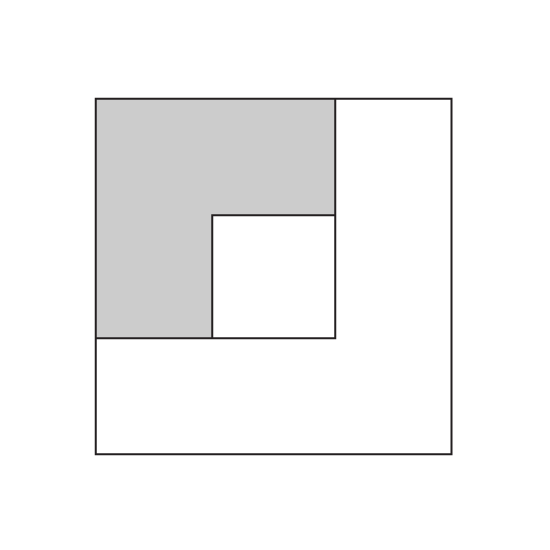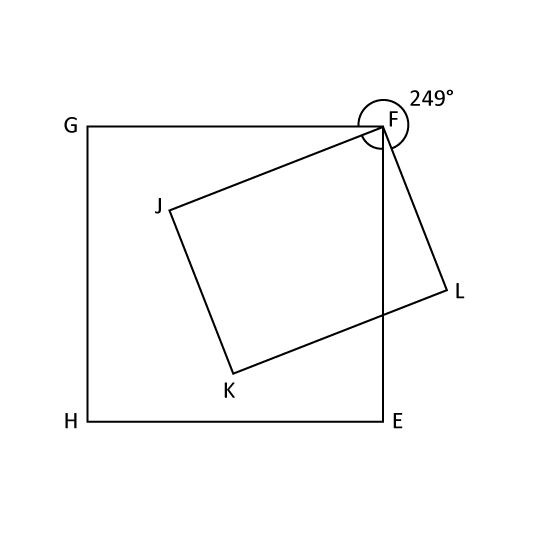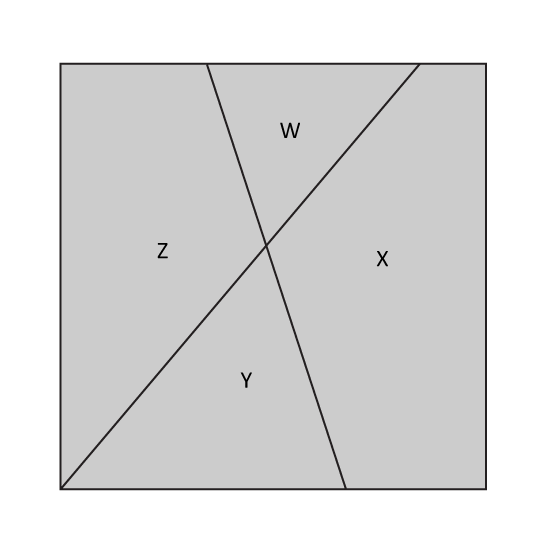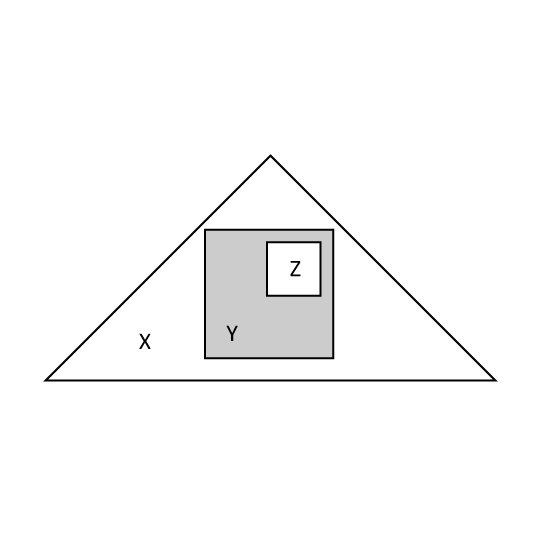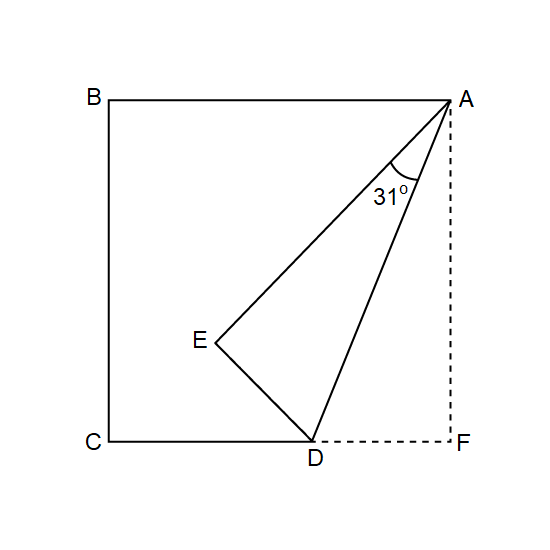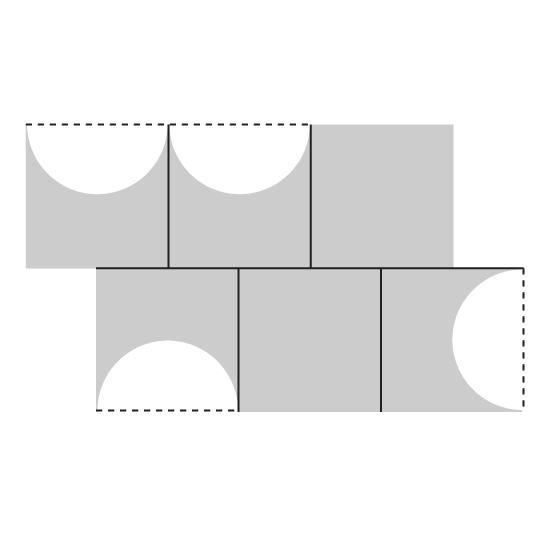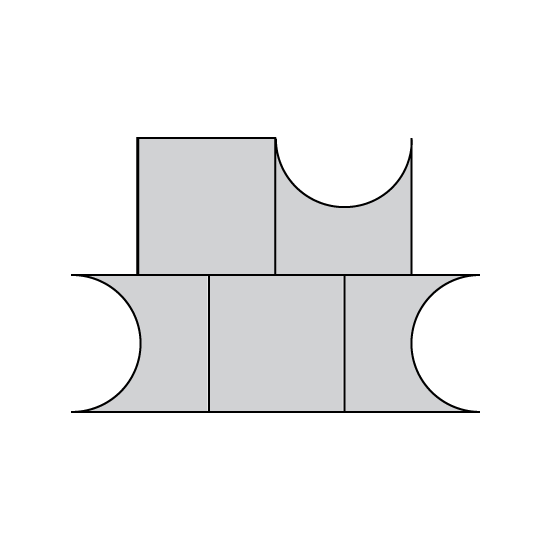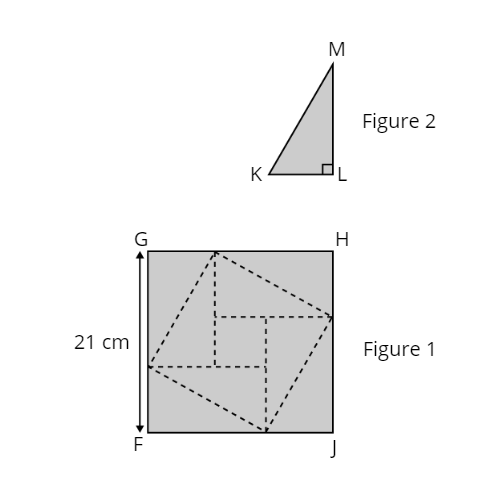Level 2
W, X, Y and Z are mid-points of the sides of the square. If the area of the square is 100 cm2, what is the area of the unshaded triangles? Leave your answer in mixed number.
Level 2
W, X, Y and Z are mid-points of the sides of the square. If the area of the square is 100 cm2, what is the area of the unshaded triangles? Leave your answer in mixed number.
Image in this question is not available.
Level 3
This figure is not drawn to scale. It is made up of 3 squares. The ratio of the area of the smallest square to the largest square is 2 : 9 while the shaded area is 37 of the unshaded area. What is the ratio of the shaded area to the area of the smallest square?
Level 3
This figure is not drawn to scale. It is made up of 3 squares. The ratio of the area of the smallest square to the largest square is 2 : 9 while the shaded area is 37 of the unshaded area. What is the ratio of the shaded area to the area of the smallest square?
Image in this question is not available.
Level 2 PSLE
In the figure, EFGH is a square, FJKL is a rectangle and ∠GFL = 249°. Find ∠ EFJ.
Level 2 PSLE
In the figure, EFGH is a square, FJKL is a rectangle and ∠GFL = 249°. Find ∠ EFJ.
Image in this question is not available.
Level 3
The square is divided into 4 parts, W, X, Y and Z. W and X form 12 of the square. The area of Y is double of the area of Z, while the ratio of the area of X to the area of W is 1 : 3.
What fraction of the square is the sum of the area of X and Y? Leave the answer(s) in the simplest form.
Level 3
The square is divided into 4 parts, W, X, Y and Z. W and X form 12 of the square. The area of Y is double of the area of Z, while the ratio of the area of X to the area of W is 1 : 3.
What fraction of the square is the sum of the area of X and Y? Leave the answer(s) in the simplest form.
Image in this question is not available.
Level 2 PSLE
The shaded figure is formed using 3 squares and 3 equilateral triangles. The length of the straight line PQ is 15 cm. Find the perimeter of the shaded figure.
Level 2 PSLE
The shaded figure is formed using 3 squares and 3 equilateral triangles. The length of the straight line PQ is 15 cm. Find the perimeter of the shaded figure.
Image in this question is not available.
Level 3
The figure is made up of two squares and a triangle. The ratio of the area of Triangle X to that of Square Z is 11 : 1. The ratio of the shaded area to that of the unshaded area is 1 : 3. If the difference between areas of Triangle X and Square Y is 464 cm2, what is the area of Square Z?
Level 3
The figure is made up of two squares and a triangle. The ratio of the area of Triangle X to that of Square Z is 11 : 1. The ratio of the shaded area to that of the unshaded area is 1 : 3. If the difference between areas of Triangle X and Square Y is 464 cm2, what is the area of Square Z?
Image in this question is not available.
Level 2
A square piece of paper is folded as shown in the figure.
- Find ∠ADE.
- Find ∠EDC.
Level 2
A square piece of paper is folded as shown in the figure.
- Find ∠ADE.
- Find ∠EDC.
Image in this question is not available.
Level 2
The figure is formed by 6 identical squares with 4 similar semi-circles cut out from it. Each square has a side of 14 cm. Find the perimeter of the shaded figure. Express the answer in terms of π.
Level 2
The figure is formed by 6 identical squares with 4 similar semi-circles cut out from it. Each square has a side of 14 cm. Find the perimeter of the shaded figure. Express the answer in terms of π.
Image in this question is not available.
Level 2
The figure is formed by 5 identical squares with 3 similar semi-circles cut out from it. Each square has a side of 14 cm. Find the perimeter of the shaded figure. Leave the answer in terms of π.
Level 2
The figure is formed by 5 identical squares with 3 similar semi-circles cut out from it. Each square has a side of 14 cm. Find the perimeter of the shaded figure. Leave the answer in terms of π.
Image in this question is not available.
Level 2 PSLE
Anna has a square piece of paper FGHJ of side 21 cm. She cut along the dotted lines shown in Figure 1 to get one small square of area 9 cm2 and 8 identical right-angled triangles. Triangle KLM in Figure 2 is one such triangle. Find the length of KM.
Level 2 PSLE
Anna has a square piece of paper FGHJ of side 21 cm. She cut along the dotted lines shown in Figure 1 to get one small square of area 9 cm2 and 8 identical right-angled triangles. Triangle KLM in Figure 2 is one such triangle. Find the length of KM.
Image in this question is not available.

